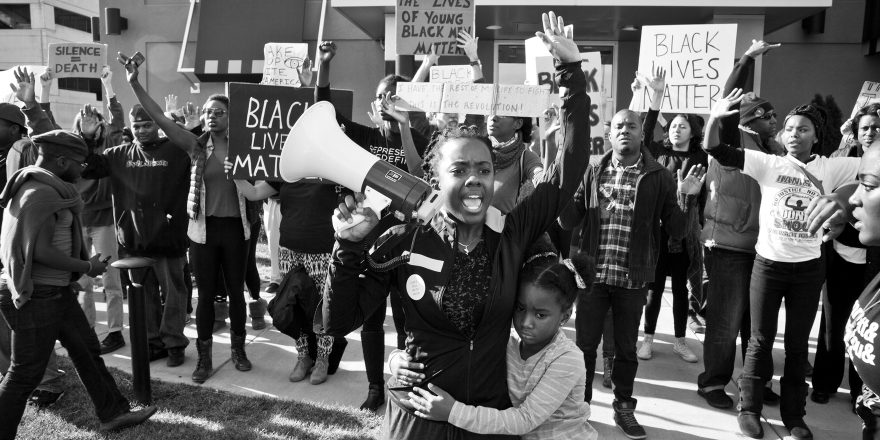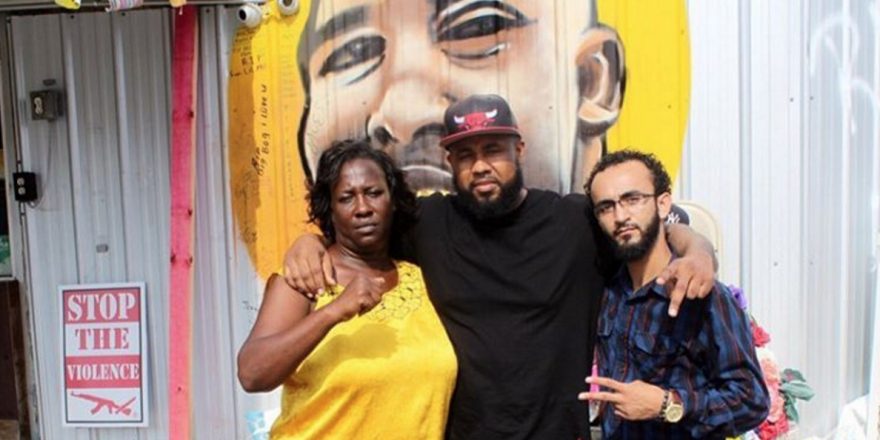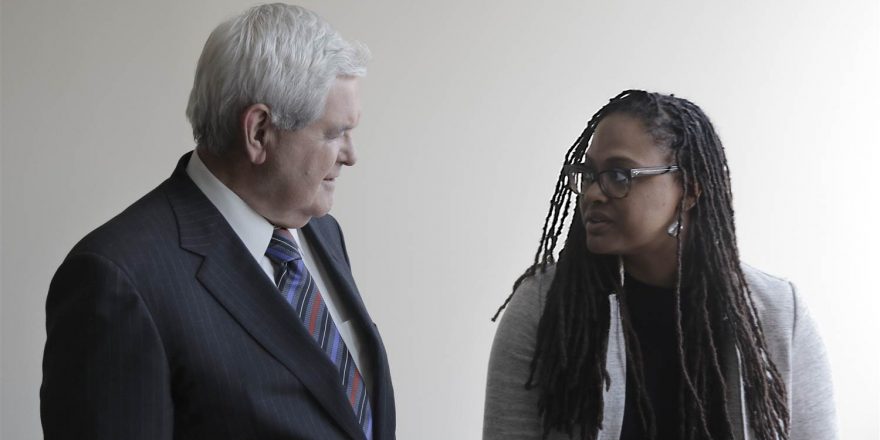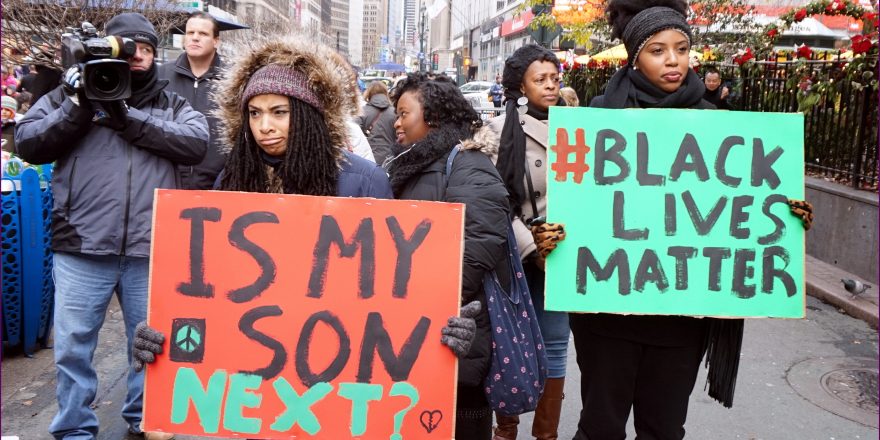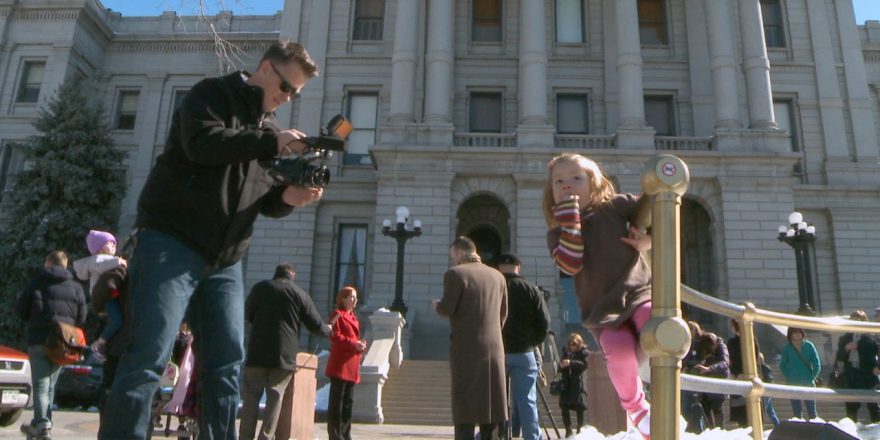Whose Streets? focuses on a group of activists who set out to disrupt business as usual, risking everything in the process. The film premiered opening night at Sundance Film Festival in January 2017, and what followed were 10 of the most emotionally conflicted days of my life. Conflicted, because there is a baked-in contradiction between the topic of the documentary and the reality of distributing it. It was Day 3 of the festival and I was trudging through the snow toward what felt like the hundredth interview. The chill on the bottoms of my feet pulled me backward through time to a cold night in November, two years before. I was outside of the Ferguson Police Department, with the community of protesters who had become a family in the months following Darren Wilson’s fatal shooting of 18-year-old Michael Brown Jr., a murder which a grand jury had decided was legal, though the community disagreed. It was the day after Thanksgiving and the country had seen a 10 percent drop in sales as Black activists around the nation called for #BlackOutBlackFriday. There are many explanations for the decline – increased online shopping, deals starting earlier – but the fact remains that Black organizers were calling for an end to the consumerism that was propping up capitalism, and the decrease in sales was marked as a victory. With this in mind, I was left to reconcile the fact that I had come to Sundance with one main motivation: to sell this film.
Growing up, money was not an object. To be clear, we didn’t have much of it, but it wasn’t an object, it was a survival mechanism and a cursed necessity. It was a system of valuation for human life that placed my mother, myself and our two-bedroom apartment in South Central L.A. firmly at the bottom of the totem pole. I watched my mother, a musician and one of the most intellectually brilliant people I have ever known, work to keep bills paid at the cost of her own creativity. Through high school and college, I watched my classmates, privileged and sheltered, spend more money on entertainment than the cost of our rent. Through this dichotomous experience I began to develop a resentment and mistrust toward the idea of money. It prevented me from fully socializing with my classmates. It prevented me from taking the unpaid positions which might have allowed me to find my passion sooner. It was a constant source of anxiety. Money represented all that I could not attain.
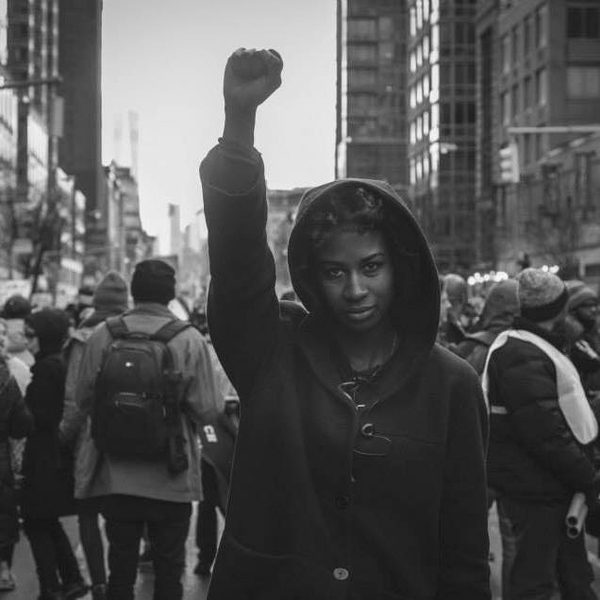
Imagine me then, two years into “the real world,” that vague and threatening promised land that awaits every college student, sitting on stage at the New York Times Center, triple digits in my bank account, before a sea of documentary’s most influential figures. Whose Streets? had been chosen to participate in Good Pitch New York, a forum where a group of handpicked film teams each presents a seven-minute pitch explaining their film and its potential impact on the world. Supported by some of St. Louis’ most eloquent organizers, Kayla Reed, Tef Poe, and Rev. Sekou, my co-director Damon Davis and I pitched, and the response was astounding:
Access to an entire organization’s mailing list.
Free legal advice.
Ten thousand dollars.
Thirty thousand.
I sat there sweating, a smile plastered to my face. My thoughts oscillated rapidly between joy and disgust. Joy that this community of documentary influencers wanted to see Whose Streets? come to fruition. Disgust that it took the death of a child to generate an interest in Black life. Joy that this story would not be told by those who look at Black people (me) with abject curiosity, like scientists watching rats in a maze. Disgust again at imagining how many rents and petty fines could be paid with the sound design line item alone.
Thirty-five thousand.
Fifty thousand.
In a matter of 10 minutes, the film went from being a possibility to an imperative, for now we had promises to keep. In the same 10 minutes, I went from being a former med school candidate trying to do a thing, to a first-time filmmaker with funders. Knowing that it would be impossible to make this urgent film while holding another job, our team had created a budget that would allow the core members to focus solely on the project. And with this I found myself on the inside of a very special club, the club of People Who Can Definitely Make Rent. Up to that point in my 23 years of Black Woman life, neither my prep school, nor Ivy League educations had allowed me access into this club, and now not only was I in, but I was doing something that mattered to me and to others. The stinging irony of the fact that it took a Black teenager’s death for me to experience living a sustainable life will never be lost on me.
One year and one month later, we got the call. I missed it because I was on the train. I saw a voicemail from a 323 number. Before I could check the message another call came in from my co-director.
“Yo. My Nigga. We got into Sundance.”
“My NIGGA.”
(Note the only acceptable use of this word; an expression of camaraderie between Black people, celebrating an instance of joy and/or success within the context of sustained white supremacy; mentally, and should it be necessary to read this aloud, non-Black readers should use the substitute “N-word.”)
I almost fell over in the middle of Rite Aid. Clean-up on aisle three.
A few months later, there I was trudging through the snow at Sundance, trying not to think about the exorbitance of the spectacle, trying not to think of parallels between the auctioning of the story of a community’s struggle, and the auctioning of Black bodies. Praying that we would find the right partner, and that all of this did mean something more than a boost to my personal and professional status, and hoping that the people featured in the film who had come to share this moment were not similarly triggered by the dissonance between the festivity of the event, and the reason we had come. Ultimately we did find that partner in Magnolia Pictures, and to date I have personally traveled to over a dozen states and three different countries with the film – not counting the trips taken by other members of my team and organizers from St. Louis – and the tour is not set to wind down any time soon. Our Q&As feel different than others I have attended because, for audiences, the experience of the film is so visceral that questions about form and process tend to take a back seat (sometimes to my chagrin) to a real-time dialogue about racism and solutions. People of color in white states like Maine share that they feel fortified and emboldened by the retelling of the Ferguson story through the eyes of everyday people. White people remark that they feel unable to weigh in (imagine!), and that the film leaves them unsettled and needing to sit with what they have just seen. I have always believed that cognitive dissonance is the first seed of intellectual and spiritual growth, and so I mark this as a sign of a job well done. But what lessons do I take?
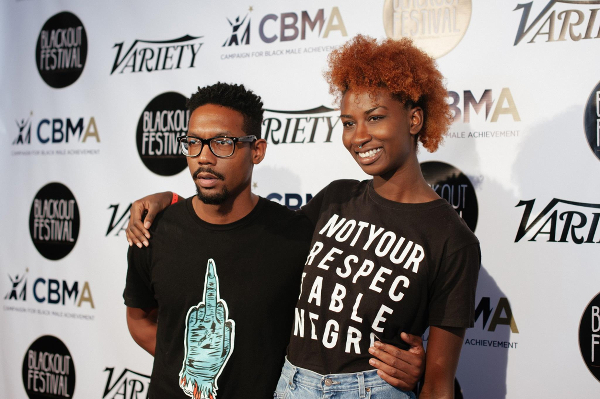
I have not learned a way to be at peace with my professional success being inextricable from Black death. It is only the consent and approval of those who are in the film, who live in St. Louis and still face the same stacked deck, which allows me accept this. And so I have a request of anyone who is creating, programming, funding, curating or choosing what to consume; if we are to hold out hope that existing institutions can contain all of us, and that genuine representations of humanity can thrive within them (I am still not sure), we must look for more than Black death. We must begin to see Black stories as universal stories that do not require translation. If perseverance in spite of death and struggle continue to be the main themes of the art made and embraced about Blackness, then progressive institutions are exchanging a subhuman stereotype for a superhuman one, leaving no room for us to simply just be.



